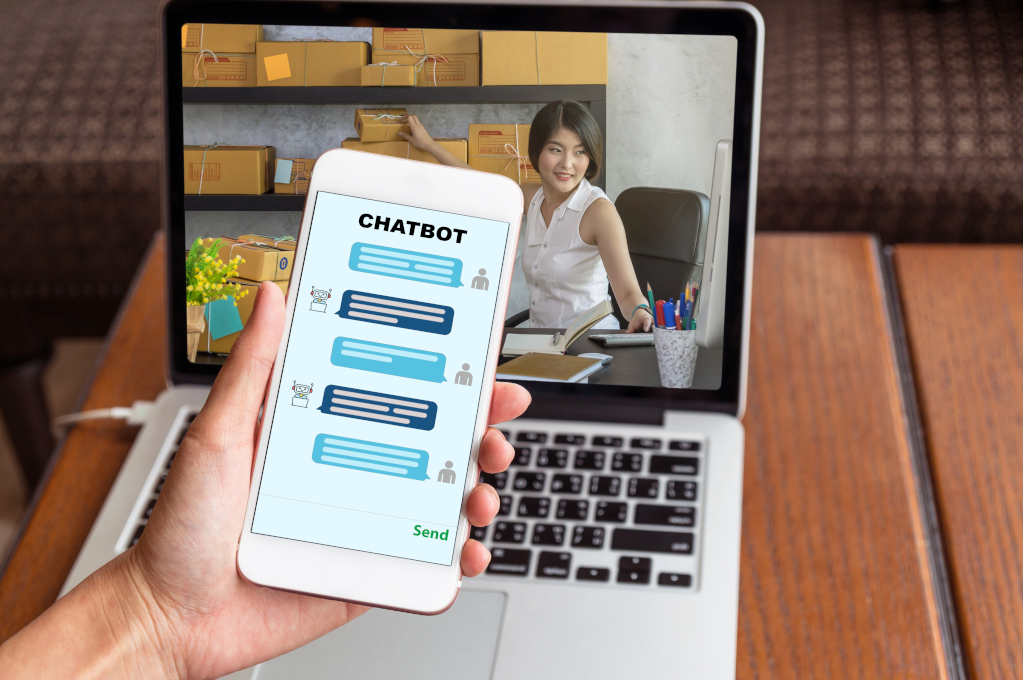In 2019 research house Juniper expects some 2.6 billion interactions between consumers and retail chatbots. That sounds pretty impressive, but by 2023, they expect that number to reach over 22 billion, while success rates will also continue to explode.
Customer service chatbots are currently where the market is at, but retail is fast catching up as consumers fancy chatting about their potential purchases rather than just stare at static photos. The numbers are part of the paid report “AI in Retail: Segment Analysis, Vendor Positioning & Market Forecasts 2019-2023” and be sure to check back in 2023, to see just how accurate Juniper’s analysts were.
Whatever the figures end up being, the rise of chatbots is inevitable in most sectors, and retail will be keen to see how early and second generation efforts perform. We’ve already seen the likes of Lidl’s Margot chatbot helping to sell wine and fashion house Ted Baker trying to reach and engage consumers in different ways.
Chatbots Taking over the High Street
As the high street comes under further pressure bots will help reduce capital expenditure, perhaps even appearing in-store as part of booth technology, or Amazon/Argos-style digital stores. But for most use cases they will feature one social media, apps and online stores to help customers find what they want, help upsell accessories or consumables and act as a useful reminder for sales, events and other worthwhile activities to keep people coming back.
Chatbots will also be in favour among startups to help keep their costs down, preferring solely automated bot responses to having to staff an office with support staff or consign the roles to outsource specialists. While most retailers can manage without bots for now, in the coming years as retail becomes a numbers-game-death-spiral every cent, euro or pound saved by bots will be vital for the bottom line.
Juniper’s bean counters reckon that retailers could be looking at annual savings of around $439 million by 2023, up from just $7 million in 2019 on a worldwide basis. On top of that, they reckon that retail sales from bot interactions will hit $112 billion by 2023, up from $7.3 billion this year, which is the more dramatic statistic for impressive growth of 98%.
The Sales Bot of the Future
As chatbots become more efficient sales staff, and customers get used to dealing with them, there’s little doubt that they will help create new relationships with consumers.
Imagine a bot that is like the one loyal worker you know at your local coffee shop, barbers or in your local grocery store. The bot could build a rapport using natural language processing and AI to understand what you’re asking. It can access back-end data and services to sense your buying patterns, to perhaps remind that you got that gift last year for a relative’s birthday or that a new version of something you once picked up is now available.
Looking beyond standard retailers, U.S. research firm Gartner recently highlighted that “52%” of telco organizations deploy chatbots” showing customer-centric firms are pretty much halfway there to adoption, while over a third of all businesses now use AI tools of some type.
Over at Forrester, their research shows that 54% of retailers in a recent survey were looking to open new stores, perhaps showing there’s life in the malls/high streets yet. However, these retailers are ever more reliant on social media, personalised marketing and similar efforts to attract customers to those stores, somewhere the chatbot could provide an invaluable ally.
Whatever the message a retailer wants to get out, it looks inevitable that chatbots will be involved at some point in the conversation. And, as the AI gets smarter and more aware of the customer, bots will be doing more of the heavy lifting including sales, checkout and customer support, all tailored perfectly to that customer and their specific purchases.
These, along with big-brand bots from the likes of Levi’s, Burberry and others could soon be in competition for sales, which will make for an interesting battle or perhaps partnerships with bots sharing information and customers to provide more information.
